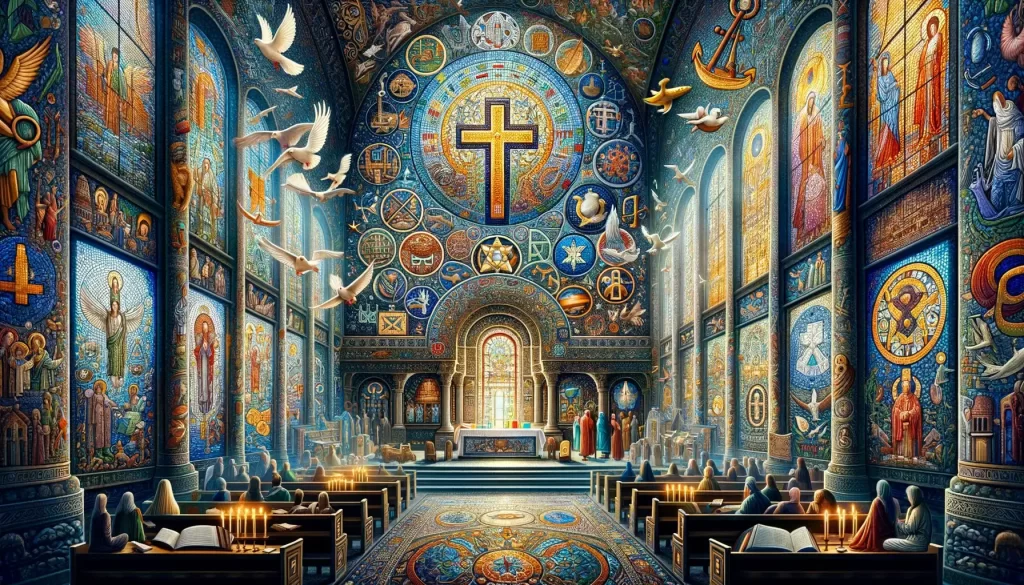
National Association of Christian Ministers Summary Series: Theology
Christian iconology is the study and interpretation of Christian art and symbols, particularly in relation to their religious and theological significance. It involves the analysis and understanding of the visual representations found in Christian art, including icons, paintings, sculptures, mosaics, and other forms of artistic expression.
Iconology goes beyond the mere appreciation of aesthetics and explores the deeper meanings and messages conveyed through Christian art. It seeks to understand how the visual elements, such as figures, colors, gestures, and objects, communicate theological concepts, biblical narratives, and spiritual truths.
Here are some key aspects and considerations in Christian iconology:
1. Symbolism: Christian art often employs symbolic elements to convey meaning. For example, the use of specific colors may represent different aspects of Christ’s nature or events in the life of a saint. Animals, objects, gestures, and geometric shapes can also hold symbolic significance. Iconology seeks to decipher these symbols and interpret their intended meaning within the context of Christian theology.
2. Biblical and Theological Themes: Christian art frequently draws inspiration from the Bible and theological doctrines. Iconology involves studying how artists depict biblical events, figures, and theological concepts. It explores the artistic choices made by the creators, the visual narratives presented, and the theological messages conveyed through the artwork.
3. Iconography: Iconography is a specific aspect of iconology that focuses on the identification and interpretation of specific icons and symbols used in Christian art. It involves recognizing and understanding the visual representations of Christ, the Virgin Mary, saints, angels, and other religious figures. Iconography also considers the variations in iconographic styles across different historical periods and cultural contexts.
4. Historical and Cultural Context: Iconology takes into account the historical and cultural context in which Christian art was produced. It considers the artistic techniques, influences, and conventions of specific periods and regions. By understanding the context, iconologists can better interpret the intended messages and cultural significance of the artwork.
5. Devotional and Spiritual Purposes: Christian art, including icons, has often been used as aids to devotion and spiritual contemplation. Iconology explores the spiritual and devotional aspects of Christian art, examining how it was intended to facilitate prayer, meditation, and the cultivation of a deeper relationship with God.
6. Cross-cultural Influences: Christian art has been influenced by diverse cultural traditions throughout history. Iconology may explore how artistic styles, symbols, and motifs from different cultures have been incorporated and adapted within Christian art, contributing to its richness and diversity.
7. Historical and Contemporary Interpretation: Iconology considers both historical interpretations of Christian art and contemporary perspectives. It recognizes that interpretations may evolve and be influenced by new understandings of theology, cultural shifts, and developments in art scholarship.
Christian iconology provides a framework for understanding the visual language of Christian art and its role in conveying religious and theological concepts. It helps deepen our appreciation and engagement with Christian artworks by uncovering their meanings, theological insights, and spiritual significance.




